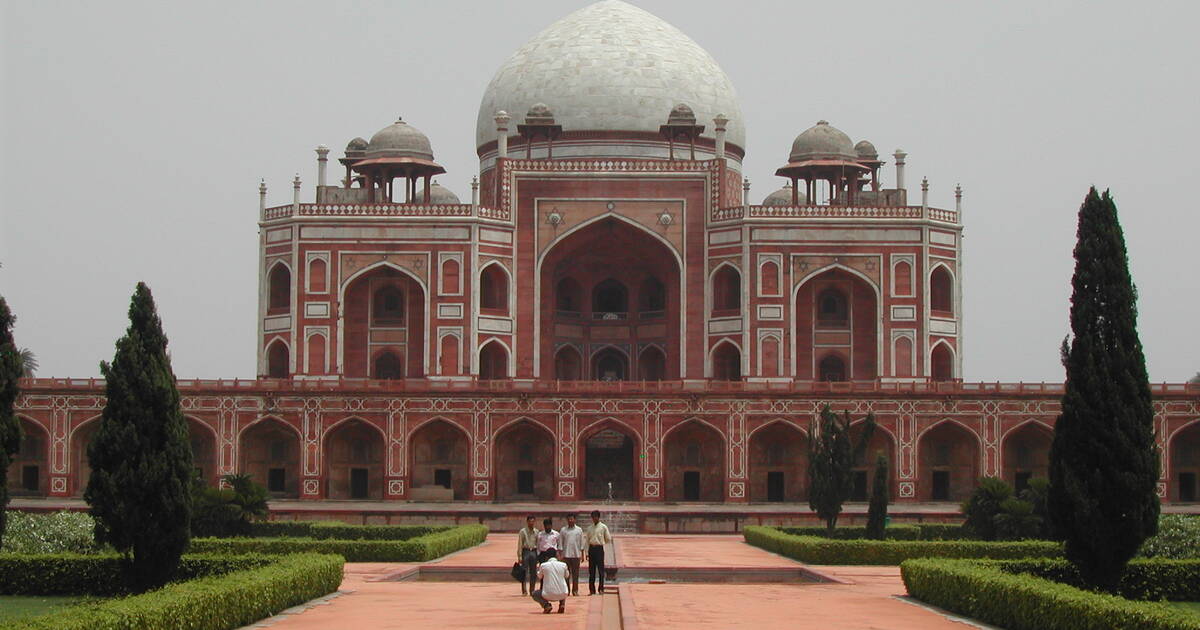Context:
On 15 August 2025, a portion of the wall and roof of Dargah Masjid Pattawali collapsed following heavy rainfall in Delhi. The structure is located adjacent to the Humayun’s Tomb complex, but it does not fall under the Archaeological Survey of India (ASI)-protected area.
About Humayun’s Tomb:
Built in 1570, Humayun’s Tomb is the first major garden tomb in the Indian subcontinent and a significant precursor to the Taj Mahal.
· Commissioned by Empress Bega Begum, Humayun’s first wife, it was designed by Persian architects Mirak Mirza Ghiyas and Sayyid Muhammad.
· The structure introduced the charbagh (four-quartered) garden, a marble-clad double dome, and high platforms—key features of Mughal funerary architecture. The tomb also houses over 150 Mughal royals, earning it the epithet “Dormitory of the Mughals.”
· Recognized as a UNESCO World Heritage Site in 1993, it has undergone major restoration by the Archaeological Survey of India (ASI) and the Aga Khan Trust for Culture, underlining the importance of conservation efforts.

About Humayun:
Accession and Early Challenges
- Humayun, the eldest son of Babur, ascended the Mughal throne in 1530.
- His reign was marked by administrative weakness and financial instability.
- Early success: Victory at the Siege of Chunar (1532) against Afghan forces.
Defeats and Exile
- Battle of Chausa (1539): Defeated by Sher Shah Suri; narrowly escaped death.
- Battle of Kannauj/Bilgram (1540): Sher Shah’s decisive victory forced Humayun into a 15-year exile.
- With Persian support, Humayun recaptured Kandahar and Kabul (1545), and finally regained Delhi in 1555.
Persian Influence and Administration:
- Exposure to Persian court culture influenced Mughal governance.
- Introduced Persian administrative practices, improved revenue systems, and promoted Persian art and architecture.
- Founded Dinpanah (refuge city) and built the Jamali Mosque.
Architectural Legacy:
- Humayun’s Tomb (completed in 1570 by his wife, Haji Begum) — India’s first grand garden-tomb, combining Persian and Indian elements.
- Inspired later Mughal architecture, especially the Taj Mahal.
Cultural Contributions:
- Patronised Persian painters Mir Sayyid Ali and Abdal Samad, laying the foundation of Mughal miniature painting.
- Established the Nigaar Khana (House of Painting) and initiated the Hamza Nama illustration project.
- His sister Gul Badan Begum’s “Humayun-Nama” provides a rare female perspective on Mughal court life.
Conclusion:
Humayun’s Tomb marks a watershed in Mughal architecture, blending Persian and Indian styles and paving the way for monuments like the Taj Mahal. As a UNESCO World Heritage Site, it embodies both cultural pride and global heritage value. The recent collapse nearby highlights the fragility of historic structures and reinforces the need for vigilant conservation of not only protected monuments but also adjoining heritage sites to safeguard India’s architectural legacy.






